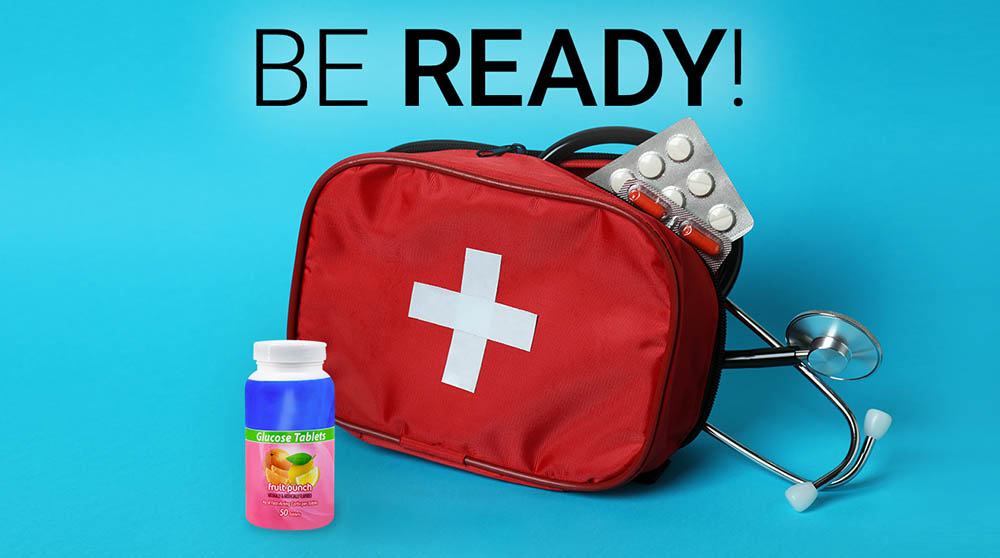
Do You Have a Hypoglycemia Treatment Plan?
Managing blood sugar levels is challenging, no matter how dedicated you are to your diabetes management plan. Hypoglycemia (low blood sugar) can happen to anyone and can come on without warning—especially for those of you taking insulin or sulfonylureas.
Hypoglycemia must be treated immediately, so having a comprehensive low blood sugar treatment plan in place is critical for you and those around you.
What Does a Hypoglycemia Treatment Plan Entail?
Generally, healthcare providers counsel you to take 15 grams of rapid-acting oral glucose (e.g., glucose tablets or juice) as soon as blood glucose levels fall below 70 mg/dL, retest in 15 minutes, and repeat the process until your target blood glucose is reached.
If juice or glucose tablets aren’t working like they usually do, or if you’re unable/unwilling to eat or drink, you need another option during a low blood sugar emergency: glucagon.
Is Your Hypoglycemia Treatment Plan Equipped with Glucagon?
Many people who should have a prescription for glucagon (due to the types of medications they take and/or risk factors they have) do not have a prescription.
Out of the approximately 8.3 million insulin-treated people with diabetes in the U.S., only 690,000 had prescriptions for glucagon filled. Shocking, right? As a result, millions of people have “incomplete” hypoglycemia treatment plans and are unknowingly left without a safety net—one that could make all the difference during a low blood sugar emergency.
Both the American Diabetes Association and the Endocrine Society acknowledge that:
- Anyone taking insulin or sulfonylureas is at high risk for hypoglycemia
- Anyone taking insulin or sulfonylureas should have a prescription for ready-to-use glucagon
If you’re taking insulin or sulfonylureas and don’t have ready-to-use glucagon as part of your hypoglycemia plan, talk to your healthcare provider right away.
Educate Your Inner Circle about How to Use Glucagon
In many cases, a family member or someone close to you will be the one to administer glucagon if you need emergency low blood sugar treatment. Make sure those in your inner circle are aware of the signs and symptoms of severe hypoglycemia, as well as where to find your glucagon and how to use it.
In Summary
If you have type 1 or type 2 diabetes and you’re on insulin or a sulfonylurea, always keep fast-acting carbs close by and get a prescription for glucagon to keep in your diabetes toolbox for emergency low blood sugar treatment. It will give you and your loved ones the power to act quickly when it really matters.
Additional Resources:
Lifesaving Tools to Prevent and Treat Hypoglycemia
How to Boost Your Hypoglycemia Confidence
Expect the Unexpected When It Comes to Severe Hypoglycemia in T2D
Educate Your Inner Circle on Hypoglycemia: It Could Save Your Life!


I have this
Hi, can you help provide additional resources for reactive hypoglycemia. I have reactive hypoglycemia and try to manage with eating. But, I still frequently drop below 70 for long periods of the night and during exercise. Because I have not been diagnosed with diabetes (no pattern of sustained highs) the doctors I have seen have not been concerned. Like low blood pressure (which I also have) hypo seemed to get cast aside as a positive when it is actually doing damage given the repetitive nature.
There are a lot of folks in your boat and if your A1c is normal, I wouldn’t worry about it. But with your blood pressure, I would definitely see a cardiologist. It might relate to your heart rate being too slow, etc.